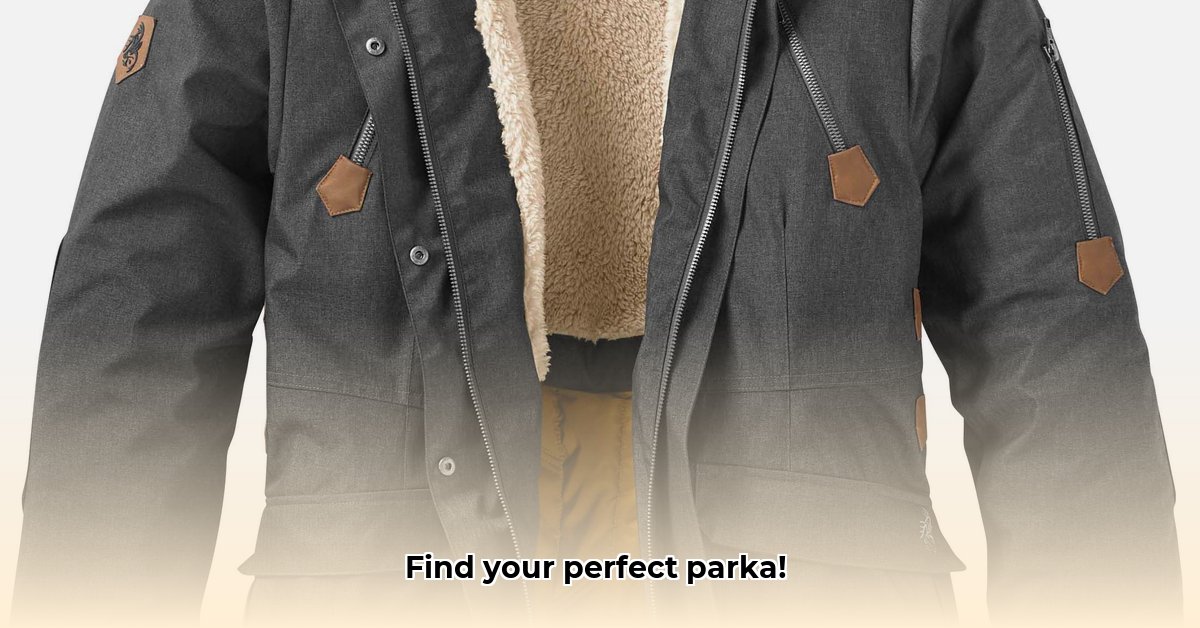
Choosing the right parka in South Africa can be tricky, considering our diverse climates. From the Cape's chilly winds to the Drakensberg's unpredictable weather, your parka needs to be a true champ. This review compares two leading brands, The North Face and RAINS, to help you find your perfect winter warrior. We'll assess performance, style, value, and sustainability, cutting through the marketing jargon to give you the facts.
The North Face vs. RAINS: A Head-to-Head Showdown
The North Face is synonymous with high-performance outdoor gear. Their parkas reflect decades of experience, built for serious cold and extreme conditions. Expect durable construction and top-notch technical features, but often at a premium price. Aren't higher prices often associated with better quality?
RAINS, a more recent arrival, impresses with its stylish, functional rainwear at a more accessible price point. Their focus is on modern design combined with practicality, making them a favourite for city-dwellers and those seeking a more contemporary aesthetic. But will the stylish design translate to peak performance in a true South African winter?
Feature Face-off: A Detailed Comparison
Direct technical comparisons between all parkas are difficult. Instead, we’ll assess key features based on manufacturer specifications and extensive customer reviews:
| Feature | The North Face | RAINS |
|---|---|---|
| Water Resistance | High-tech fabrics (e.g., Gore-Tex) for superior waterproofing; excellent in heavy rain and snow. | Durable, waterproof fabrics; performs well in moderate to heavy rain, potentially less reliable in prolonged exposure or extreme conditions. |
| Insulation | Often features thick down fill or advanced synthetic insulation; designed for cold weather. | Typically uses thinner insulation, sufficient for cooler temperatures and light rain; not suitable for prolonged sub-zero conditions. |
| Breathability | Varies across models, but generally good breathability in high-performance versions. | Good breathability relative to its level of waterproofing. |
| Materials | Mixture of durable, often high-tech fabrics; increasing use of recycled materials. | Focus on sustainable, recycled fabrics; a big win for environmentally-conscious consumers. |
| Sustainability | Increasing focus on eco-friendly practices, but not yet a consistent brand-wide feature. | Sustainability a core brand value; uses sustainable materials and ethical production methods. |
| Price Point | Premium pricing reflecting high-performance materials. | More affordable; excellent price–performance ratio. |
Real-World Performance: Customer Insights
The North Face earns consistent praise for warmth and protection in harsh weather, frequently cited by hikers and those facing extreme conditions. However, the high price point is a recurring concern. Is the superior performance worth the increased cost?
RAINS parkas receive positive feedback for their style, lightweight design, and surprisingly effective rain protection in city conditions. However, their insulation might fall short in extremely cold weather. Are they the perfect city slicker’s parka, or do they lack the versatility of The North Face?
The Verdict: Choosing Your Champion
The "best" parka depends on individual needs and budget.
Choose The North Face if:
- You need extreme cold weather protection.
- Top-tier performance is a priority.
- Budget is less of a concern.
Choose RAINS if:
- Style and affordability are paramount.
- You need reliable rain protection for moderate conditions.
- Sustainability is a key purchasing factor.
Both brands are gradually integrating more sustainable materials; responsible consumption is a growing trend that is influencing outerwear manufacturing. By carefully considering your needs and budget, you can choose the parka that suits you best. Happy exploring!
How to Compare Parka Specs: Premium vs. Budget
Choosing between premium and budget parkas involves understanding key specifications.
Fill Power (Insulation): Higher fill power in down insulation signifies greater loft and warmth. Synthetics perform better in wet conditions. Increased warmth usually means increased price.
Shell Material: Consider waterproofing and breathability. Gore-Tex offers superior performance but comes at a premium. Nylon and polyester are cost-effective options.
Features: Premium parkas often include adjustable hoods, multiple pockets, and longer lengths. Whether these features justify the higher price is a personal choice.
Sustainability: Look for responsibly sourced down and eco-friendly materials. This growing trend is influencing pricing.
Price vs. Performance: Weigh the features against your budget. A cheaper parka might suffice for moderate conditions. Do you need the best, or is "good enough" sufficient?